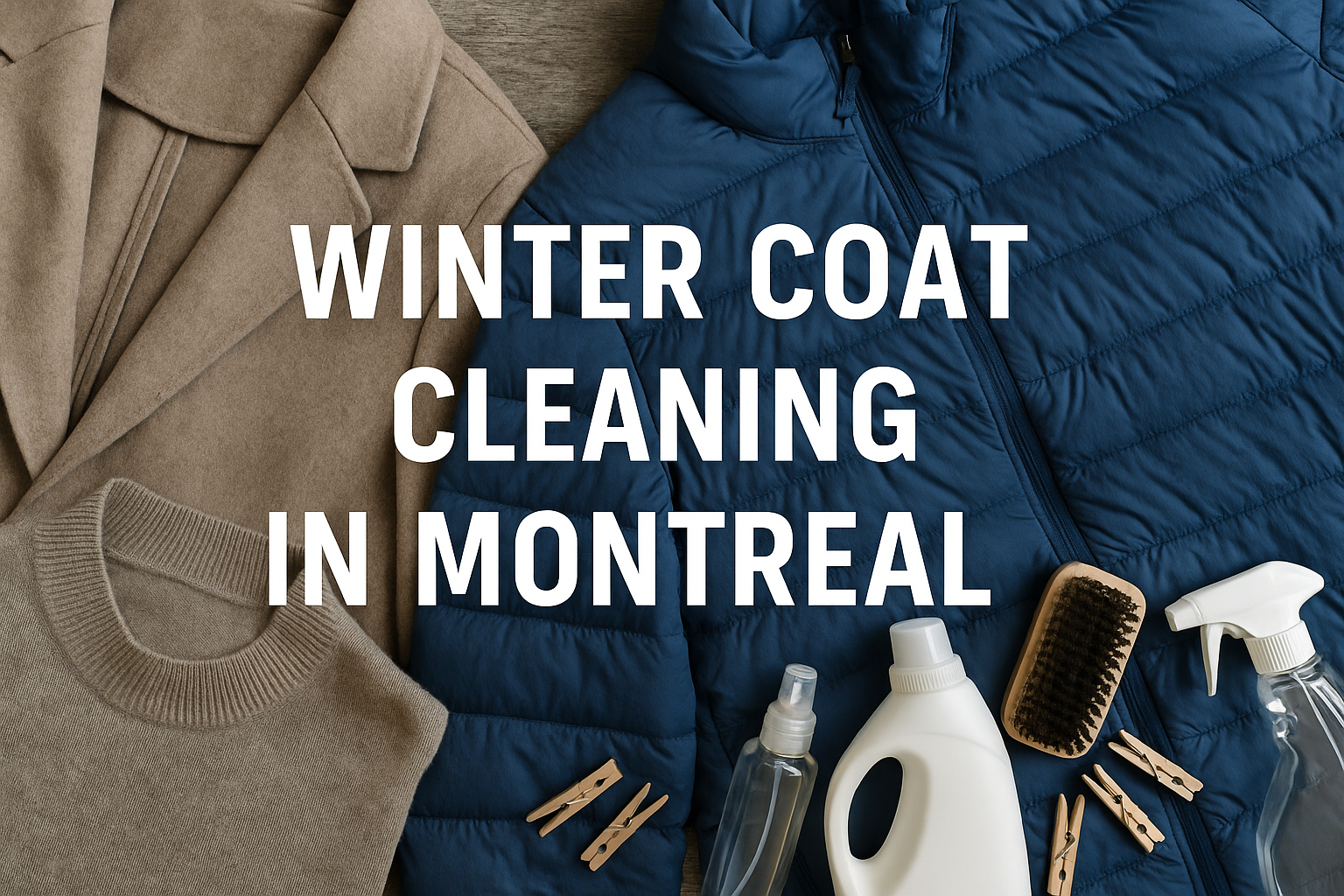
Winter Coat Cleaning in Montreal: The Complete Guide (Wool, Down, Cashmere & More)
Montreal winters bring snow, slush, and road salt—great for skating rinks, tough on outerwear. If you want your favorite coat to look sharp and last for seasons, the right cleaning routine matters. This updated, practical guide covers how often to clean different fabrics, DIY care you can safely do at home, and when to hand your coat to a professional cleaner.
Serving Montreal: Nettoyeur Marie‑Claire has convenient locations in Nouveau‑Bordeaux (2535 rue De Salaberry), Downtown (1000 Rue De La Gauchetière O), and Ahuntsic‑Cartierville (301 Boul Henri‑Bourassa E), plus fast pickup & delivery. Call 514‑334‑7830. (nettoyeur marie claire)
How often should you clean a winter coat?
As a rule of thumb, outerwear doesn’t need washing after every wear. Most wool and structured coats do best with professional cleaning once or twice per season, plus spot‑treating in between. That cadence keeps odors and salt marks at bay without over‑processing delicate fibers. (Real Simple)
Quick frequency guide
- Wool & cashmere overcoats: 1–2× per season (and always before end‑of‑season storage). (Real Simple)
- Down & puffer coats: Clean when visibly soiled or losing loft; use a pro process that restores fill evenly.
- Performance synthetics (poly/nylon): Wash as needed; avoid high heat to preserve coatings and shape.
Always check the care label symbols first—those pictograms follow the ISO 3758 standard and tell you the maximal safe care for that garment (washing, bleaching, drying, ironing, and professional care). (GINETEX)
 Fabric‑by‑fabric care tips
Fabric‑by‑fabric care tips
Wool & Cashmere Coats
- Daily care: After wearing, let the coat air out on a wide, padded hanger; use a clothes brush to lift dust and revive the nap.
- Spot cleaning: Blot (don’t rub) with a barely damp cloth. Avoid home stain cocktails that can shrink or distort fibers.
- When to go pro: Noticeable odors, salt rings, food/oil stains, or end‑of‑season refresh—professional cleaning protects shape, lining, and interlinings.
Down & Puffers
- Biggest risks: Clumped fill and flattened baffles from incorrect washing or drying.
- Best approach: Professional wet‑cleaning or specialized down processes that restore loft evenly and fully dry the fill.
- At home (if label allows): Use a gentle cycle, minimal detergent, and long, low‑heat tumble with clean dryer balls to re‑loft—then fully dry to prevent odor.
Technical & Synthetic Shells
- Mud/salt: Rinse with cool water as soon as possible; spot‑clean with a mild solution.
- Heat caution: Skip high dryer heat to avoid damaging coatings. If water stops beading, ask about re‑proofing after cleaning.
Montreal’s winter wildcard: salt stains
Road salt leaves white, crusty marks and can discolor fabrics if it sits. Brush off dry residue, then blot the area with clean, warm water. Persistent rings? A professional cleaner can dissolve salt without leaving halos or watermarks—important for wool and tailored coats.
Why professional dry cleaning is worth it
A skilled cleaner uses fabric‑appropriate methods (dry cleaning, wet cleaning, or hand treatment) to:
- Remove oils, odors, and salt without felting or shrinking wool
- Protect structure (shoulder pads, canvases, interlinings)
- Restore finish and drape so your coat looks new longer
Regular professional care extends the life of your coat and prevents costly replacements—especially for investment pieces. (nettoyeur marie claire)
Smart stain triage (what you can safely do now)
- Act fast: Blot (don’t rub) spills with a clean, white cloth.
- Grease/oil: Sprinkle a small amount of cornstarch to absorb, then gently brush away before professional cleaning.
- Unknown stains: Skip DIY chemistry—mixing cleaners can set stains or damage dyes. When in doubt, bring it in.
Storage: protect your coat between seasons
- Clean first. Stains and body oils oxidize and attract pests; end‑of‑season cleaning is essential. (Real Simple)
- Use the right hanger. Wide, padded or wooden hangers preserve shoulder shape.
- Choose breathable protection. Store in a cotton garment bag; avoid sealed plastic that traps moisture.
- Cool, dry, dark. Keep away from heat sources and sunlight; add cedar to deter pests naturally.
Book trusted care in Montreal
Nettoyeur Marie‑Claire makes winter‑coat maintenance easy with pickup & delivery and three convenient locations across the city. Call 514‑334‑7830 or visit us to schedule service in Nouveau‑Bordeaux, Downtown, or Ahuntsic‑Cartierville. (nettoyeur marie claire)
FAQs
What do the care label symbols mean?
They’re standardized icons (ISO 3758) that show the most intensive safe treatment for washing, bleaching, drying, ironing, and professional care. Follow them to avoid damage.
How often should I dry clean a wool coat?
Typically once or twice per season, plus spot‑treating in between and a full clean before storage. Heavy use or visible soil may require more frequent service.
Can salt rings be removed from wool?
Yes. Brush off dry residue and blot with warm water; stubborn rings are best handled by a professional to prevent halos and color loss.
Is professional cleaning really better than washing at home?
For structured wool and tailored coats—absolutely. Pro care protects shape, linings, and finishes, and helps garments last longer.
Check out our Facebook!